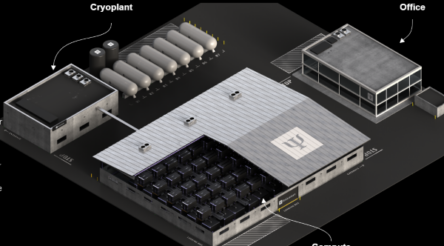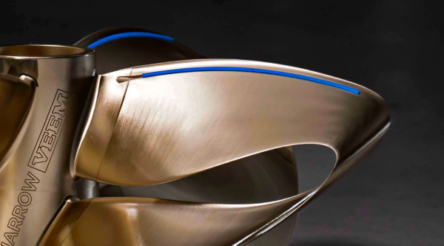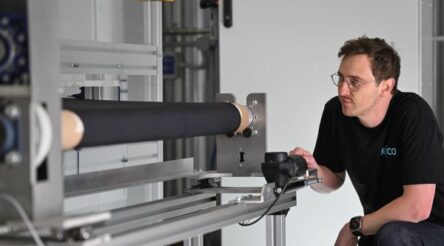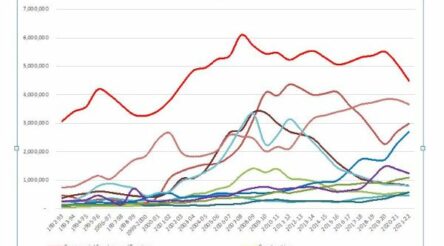Robotics adoption matters: why smart factories and robotics are the future of Australian manufacturing

Today @AuManufacturing’s Robotics adoption matters series turns to the collection and use of manufacturers’ data and the improvements this can bring. Jakes Mantle explains.
In only a few decades, automation has become commonplace in the Australian manufacturing industry. While every manufacturer operates differently, they all face a common challenge – the need for access to real-time insights across processes, partners, products and people. They not only need to have access to these insights, however. They also need to be connected to them in order to act decisively.
Advances in communication technologies, devices connected to the internet and data analytics are happening at a much faster rate than any other time in history. From the largest car-making factories to the smallest devices like the iWatch, computers and self-reporting sensors are found everywhere. This is also known as Industry 4.0 and marks the fourth revolution in manufacturing.
The smart connected factory is much more than pure automation, and more about the way products are produced thanks to the digitisation of manufacturing. The concept of adopting and implementing a smart factory can seem overwhelming and expensive. However, rapid technology changes have made the shift towards a more flexible production system almost imperative for manufacturers.
What is Industry 4.0?
Industry 4.0 is an internet-connected factory where systems work together to create a virtual ecosystem on the factory floor. Robotics and Artificial Intelligence (AI) help make up this virtual ecosystem that provides factory managers and decision-makers with real-time data that they can access from anywhere. For factory floor managers, who may need to manage several factories, this means they can make time-sensitive and informed decisions from wherever they have an internet connection.
Industry 4.0 provides a more comprehensive, interconnected and holistic approach to manufacturing. It connects the physical with digital, allowing for collaboration and access across departments and the wide supply chain. Manufacturers are empowered to have more control and a better understanding of their business to drive growth.
Connectivity is the key to building a complete picture of manufacturing operations. The smart connected factory brings together the physical and digital worlds. Smart factories lead to innovation that ultimately results in increased availability of vital healthcare equipment, environmentally cleaner factories and smarter cities. But to be truly connected, manufacturers need data.
Data becomes the currency manufacturers rely on
Data is the currency for smart connected factories. When sophisticated manufacturing machines produce data, that data can be used to improve performance, including compliance with regulatory requirements. However, manufacturers should carefully evaluate if they should embark or expand on a smart connected factory. Becoming smarter can ultimately result in increased speed to market, better ability to capture market share and improved profitability, product quality and reduced staff turnover.
Becoming a smart connected factory can address areas like asset efficiency, as the data that is produced can be analysed for performance issues that can be self-corrected. Self-correction is what sets smart factories apart from traditional automation as it leads to better asset efficiency, which is one of the most significant benefits of becoming a smart factory. Better asset efficiency can lead to lower asset downtime, optimised capacity, and a reduction in changeover time.
Smart factories are also characterised by self-optimisation, which makes predicting and detecting quality defect trends faster and identifies potential human, machine, or environmental causes of low quality. This could lower the amount of product wastage and lead times while increasing fill rates and yield.
With an optimised quality process, manufacturers can deliver better quality products with fewer defects and recalls. According to Deloitte, the smart factory offers lower lead times for customers and lower overall cost, along with a production capacity improvement of 25 per cent, and 50 per cent fewer defective products1.
With streamlined processes, manufacturers can also improve on the safety of their human workforce and the environmental sustainability of their smart connected factory. The upshot of the types of operational efficiencies that come from a smart factory is a smaller footprint than the traditional manufacturing process. With a smaller footprint and fewer defective products, great environmental sustainability can be achieved without a considerable cost to the manufacturer.
The relative self-sufficiency of the smart connected factory will ultimately replace certain repetitive and fatiguing activities that have traditionally been done by the human workforce. The upside of this is a more engaged workforce, with the role of the human worker in a smart factory environment taking on more responsibility involving higher levels of judgement, leading to greater job satisfaction.
The evolving role of robotics and artificial intelligence
The role of robotics and AI is not to erase the role of human workers but to enhance their position by doing the most repetitive tasks more efficiently. This releases human workers so they can work alongside automated systems with simplified manufacturing processes and a greater level of precision and quality.
Robotics has become central to improving the quality of parts and products, higher yields because of less time to manufacture and more predictability with the ability to understand workflow and process in detail. With margins becoming increasingly tight, robotics boosts profitability as more tasks are done by smart machines that lower operational costs in the long run.
According to RMIT, Industry 4.0 has the potential to significantly increase Australia’s economic competitiveness, with automation alone set to provide a $2.2 trillion boost to the national income between 2015 and 2030 from productivity gains2.
Smart connected factories increase the output, quality and consistency for manufacturers who are operating on tight margins. Manufacturers that embark on or expand on their smart factory journey will benefit from a significant competitive advantage, but the road ahead won’t be easy. Manufacturers will reap the benefits if they choose to partner with experienced consultants who help factories transition to smart technologies.
True smart manufacturing is about having a reliable, efficient factory that can adapt quickly and reduce the amount of downtime and errors that occur. It’s clear that technology will continue to move at pace, manufacturers that choose not to evolve into a smart connected factory will be left in the dust of their competitors.
1 The Smart Factory – responsive, adaptive, connect manufacturing https://www2.deloitte.com/content/dam/insights/us/articles/4051_The-smart-factory/DUP_The-smart-factory.pdf
2 Hermann, M, Pentek, T & Otto, B 2015, Design Principles for Industrie 4.0 Scenarios: A literature review (Working Paper No. 01), TU Dormund
Jakes Mantle is Solutions Director – APAC at SYSPRO. You can follow him on twitter here.
 @AuManufacturing’s Robotics adoption matters series is brought to you with the support of the Advanced Robotics for Manufacturing Hub.
@AuManufacturing’s Robotics adoption matters series is brought to you with the support of the Advanced Robotics for Manufacturing Hub.
Subscribe to our free @AuManufacturing newsletter here.
Topics Manufacturing News Technology
@aumanufacturing Sections
Analysis and Commentary Awards Defence Manufacturing News Podcast Technology Videos










